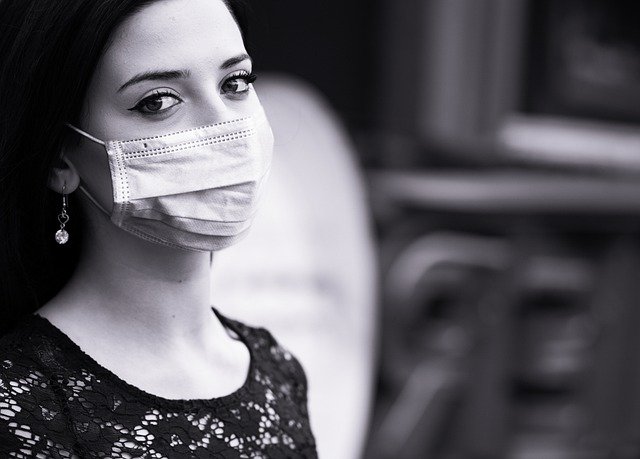
As the COVID-19 pandemic progresses, a much debated issue continues to be the use of face masks by otherwise healthy individuals in the community – something that is yet to be recommended by either the World Health Organisation (WHO) and Public Health England (PHE). Increasingly, other countries are not only advising but requiring their citizens to wear face masks in public. Since early March, I have argued in medical journals including The Lancet and the BMJ that it’s time for the UK to do the same.
The main reason behind the advice of PHE and the WHO is that there is no evidence that mass use of masks is effective in preventing SARS-CoV-2 infection. In contrast, the USA’s Center for Disease Control and Prevention (CDC) now advise the wearing of cloth masks in public. Other nations including Canada, South Korea, and the Czech Republic have made similar recommendations.
Despite its increasing use, the public health principles underpinning mass masking during this pandemic are not widely understood. Most people wear masks to protect themselves. However, because of possible transmission of this disease by those who are asymptomatic, a stronger reason for wearing masks is that it would act as a form of source control and will protect others from respiratory droplets emitting from one’s airway. The intransigence of the WHO and PHE stems partly from the same misconception because previous research on the use of masks that has likewise focused on the protection of the wearers has produced mixed results. These research was all related to influenza or influenza-like illness and was not designed to evaluate mass masking in whole communities. No research has been done during a pandemic of such severity as the current one.
The WHO and PHE have erroneously equated absence of evidence of effectiveness from clinical trials on mass masking to evidence of ineffectiveness. In fact, there are strong mechanistic reasons for covering the mouth to reduce respiratory droplet transmission. If it does not work, why do we ask people to cover their mouths when coughing or sneezing. But the faith of this respiratory etiquette is not based on clinical trials. Some readers will suggest that in view of the global shortage of masks, medical masks must be reserved for health-care workers. Thankfully, to control the infection source rather than to self-protect, cloth masks, as recommended by the US CDC, are likely to be adequate, especially if everyone wears a mask. Cloth masks can be made at home and reused after washing. There are plenty of online videos showing how this can be done.
Sceptics worry about correct techniques for wearing masks but these could be taught through education, as in the case of hand washing. There are also concerns that mask wearing could lead to a false sense of security so that people might be less careful with social distancing and handwashing. This is a theoretical risk and we are unaware of any empirical evidence substantiating its presence. Indeed, have you ever seen someone who panic buys masks who does not also try to get hold of hand sanitisers? In any case, one can emphasise the importance of this point to the public.
The dismissal of a low-cost, relatively accessible intervention such as mass masking as ineffective because there is no evidence of effectiveness in clinical trials is in our view as unscientific as harmful.
A “Public Health 101” principle is that controlling harms at source should usually take precedence over mitigation. Important as it is, handwashing is mitigative in nature but masking aims at source control. The population benefits of mass masking can also be thought of as a prevention paradox. This term was coined by the English epidemiologist Geoffrey Rose, who suggested that some interventions may bring only moderate benefits to individuals but could have large population benefits. A classical example of this is seatbelt wearing. After this pandemic, mass masking may join this rank. To be effective, wearing masks in the community will only bring meaningful population benefits if practised by most people. This is similar to the concept of herd immunity after vaccination.
In the current lockdown, social distancing is of prime importance. But when shopping at supermarkets or when essential workers travel to work in public transport, mask wearing would be useful in reducing the risk for everyone. As we consider the strategy of exit from lockdown, mass masking could be an important public health measure that would help alleviating the risk arising from the relaxation of social distancing.
South Korea and Hong Kong provide two interesting examples in this context. Both places have managed to limit the COVID-19 outbreaks without full lockdown. It is not easy to assess the independent contribution of masking and other measures, including testing, contact tracing, and stricter isolation, but mask wearing is near universal there.
During the COVID-19 pandemic, mass masking with cloth masks is an important and sustainable adjunct to social distancing and hand hygiene. It should be seen as an altruistic act rather than self-protection. In actively involving every citizen, it is a symbol of social solidarity in our fight against SARS-CoV-2.
For those who remain unconvinced, I’d leave you with the following: It is your first morning back to work and you find yourself on a crowded train. If all fellow passengers wear masks, would you feel: A. Threatened? B. Annoyed? C. Indifferent? D. Reassured? Answer on the back of a postcard.